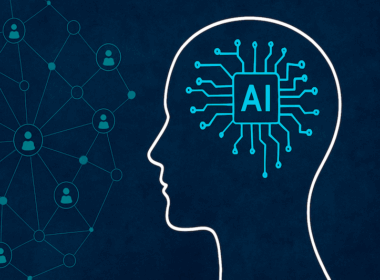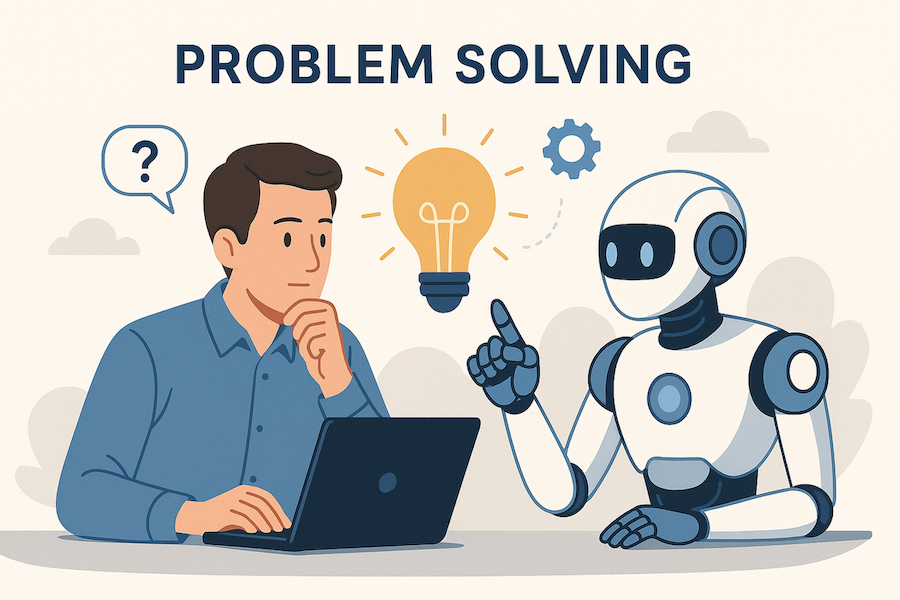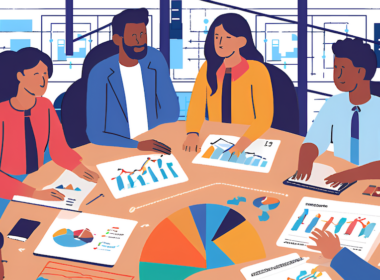The Bottom Line: If Your AI Strategy Doesn’t Start with People, It’s Already Broken
We’re in the thick of an AI revolution, and let’s be honest, it’s making people nervous. Between headlines about job losses and proposals for universal basic income, there’s a growing sense that AI is about to upend everything. But here’s what most companies are missing. This isn’t just a tech shift, it’s an economic one. And if we don’t keep humans at the center, we risk trading short-term “efficiency” for long-term collapse. The math is simple. Employees are also consumers. Replace too many people with AI, and suddenly you’ve got no one left to buy our products, advocate for your brands, or innovate from within. We need to stop thinking about how fast we can automate and start asking how AI can actually unlock human potential. That mindset shift is the key to maintaining economic stability, driving innovation, and building sustainable businesses. So how do we get there? Let’s dig in.
Key Challenges and Why a Human-Centric Approach Matters
AI-Driven Job Cuts Could Trigger a Self-Destructive Economic Loop
Lay off workers too aggressively, and you’re not just cutting costs, you’re draining the economy. When people lose their jobs, they stop spending. Consumer demand drops, businesses pull back, more layoffs follow, and the cycle continues. The short-term financials might look better, but the long-term risk is major. It doesn’t stop at the individual level. Communities suffer too. Local businesses shrink, tax revenues decline, public services get stretched thin, and inequality grows. And then there’s the mental impact. A workforce living in fear of replacement is less creative, less engaged, and less innovative. Leaders focused only on quarterly numbers are playing checkers when they should be playing chess. Innovation doesn’t happen in a fearful workforce.
Lose Your People, Lose Your Companies Memory
AI can process data, but it can’t replicate lived experience, intuition, or emotional intelligence. These human qualities hold massive value, yet they’re often the first casualties in cost-cutting efforts. This is what happened at Klarna. They replaced 700 customer service reps with AI, only to discover that while the bots could handle basic questions, they failed at complex ones that required empathy and creative thinking. Klarna had to rehire. AI can answer questions. People understand context. If you forget that, you risk hollowing out your company’s most valuable capabilities.
We’ve Barely Tapped the Power of Human-AI Collaboration
Too many companies treat AI like a faster worker instead of a tool to elevate real human work. But the real opportunity is in creating collaboration between people and machines. Take healthcare. AI can analyze massive datasets to uncover trends, but it’s doctors who turn that data into care plans. Or look at Pinterest’s “Makeathon,” where employees co-create AI tools that actually solve real business challenges. That kind of partnership is where transformation happens. Empower your people to co-create with AI. Don’t just train them to use it, invite them to shape how it’s applied.
How to Lead a Human-First AI Transformation
It’s not about balancing AI with humans. It’s about intentionally designing AI to support and empower people. Here’s how:
Start AI Projects to Do What You’ve Always Wanted to Do
- Start with the “wish list” — focus on tasks, services, and innovations that your teams have always wanted to pursue but couldn’t due to resource or staffing constraints. AI isn’t just about replacing current work, it’s about unlocking new capabilities.
- Identify high-impact opportunities that were previously too tedious or complex — think of processes that require scale, precision, or relentless follow-up, and use AI to tackle them. These are the things humans avoid not because they’re unimportant, but because they’re unsustainable to do manually.
- Use AI to bridge the execution gap — empower small teams to accomplish what used to require large headcount, allowing ideas to move from whiteboard to execution without waiting on headcount approvals.
- Reinvest savings where the work happens — if AI reduces costs in a business unit, don’t just bank the savings. Reinvest in the same area to boost growth, expand capacity, hire additional staff, trust me you will increase impact. This signals that AI is a force multiplier, not a cost-cutter.
- Elevate employees from executors to orchestrators — let AI handle the heavy lift of data crunching, formatting, and task repetition, so your people can shift focus to vision, strategy, and innovation.
- Target initiatives that were perpetually under-resourced — whether it’s customer personalization, proactive service, employee experience, or internal knowledge management, AI can finally make them possible without overloading your people.
- Make AI an accelerator, not a replacement — prioritize areas where there is unmet demand, backlog, or untapped potential. This not only builds trust but shows your workforce that AI is here to expand what’s possible, not eliminate what exists.
Preserve What People Know
- Capture institutional wisdom through thorough documentation, mentorship programs, and knowledge-sharing platforms.
- Use AI to surface patterns, trends, and historical data, but rely on human judgment to interpret nuances and apply context-specific insights.
- Encourage intergenerational knowledge transfer, allowing seasoned employees to collaborate with newer team members, complemented by AI tools that bridge information gaps.
Build Trust Through Transparency
- Provide early, continuous training and clear communication about AI’s role, functionality, and limitations within the organization.
- Establish feedback loops where employees can voice concerns, ask questions, and contribute suggestions regarding AI integration.
- Prioritize reskilling and upskilling initiatives, ensuring that employees feel supported in adapting to changes rather than sidelined by automation.
- Share success stories and case studies that highlight positive human-AI collaborations within your company to reinforce confidence and engagement.
Let People Lead the Innovation
- Involve diverse teams in the development, testing, and refinement of AI solutions to ensure that different perspectives are considered.
- Create cross-functional innovation groups that blend technical experts, business strategists, and frontline employees.
- Encourage a culture of experimentation, where employees are empowered to pilot AI-driven projects, learn from failures, and iterate on solutions.
- Foster an environment where creativity thrives, with AI serving as a catalyst that enhances human ingenuity rather than replacing it.
If your team feels like AI is being forced on them instead of built with them, you’ve already lost the cultural battle.
Conclusion: The Real AI Revolution is Human-Centered
AI is no longer optional, but how we implement it will determine whether it helps us thrive or just survive. A human-first strategy that invests in people, values their insights, and builds trust isn’t just ethical, it’s smart business. It leads to better products, faster innovation, stronger teams, and more resilient organizations. So ask yourself: Are you building AI around your people, or with them at the core?






